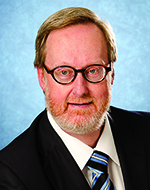Page Content
Where will this lead? Originally planned as a three-year project, the Alberta-Finland partnership has continued in a variety of forms, with the two jurisdictions continuing to exchange ideas and delegations of teachers, students and principals.
Pursuing excellence by partnering with excellence
 In the world of education, swapping notes and war stories with colleagues from other jurisdictions is a natural and commonplace occurence, but creating change that is truly transformational and enduring from these encounters is a much more rare accomplishment and therefore something that’s worthy of celebration. That’s what this issue of the ATA Magazine is about.
In the world of education, swapping notes and war stories with colleagues from other jurisdictions is a natural and commonplace occurence, but creating change that is truly transformational and enduring from these encounters is a much more rare accomplishment and therefore something that’s worthy of celebration. That’s what this issue of the ATA Magazine is about.
It was back in December 2010 when the Alberta Teachers’ Association formalized a partnership with Alberta Education and the Finnish Ministry of Education and Culture, with the idea of learning from each other and taking the best from these systems, which were each among the most highly regarded in the world. To ensure that the partnership focused on real innovation and didn’t slip into what the Finns call “educational tourism,” it included an international research team that included Andy Hargreaves and Dennis Shirley of Boston College, authors of The Fourth Way: The Inspiring Future for Educational Change.
It really was set up to be different than a typical exchange. Here’s how Shirley explained it.
“Too many people line up outside classrooms telling teachers what to do. The Alberta/Finland partnership is transformational in that it’s about teachers themselves developing school reform.”
From a historical perspective, it’s important to note that the partnership formed in the wake of Inspiring Action on Education, the 2010 government report calling for a transformation of the system. Then education minister Dave Hancock put it this way: “We know the world is changing, and that education must change with it to prepare students for a future that none of us can predict.”
I also weighed in at the time. In an Association research update entitled The Courage To Choose, I wrote “What kind of society do we want to create in Alberta and what kind of teaching and learning will get us there?”
Well, here we are, six years later. Looking back at our partnership with Finland, we can see clearly that it has provided important insights into school development and has contributed to the Association’s ability to offer meaningful input into educational reform, here in Alberta, in key areas such as curriculum and assessment. And as this partnership continues to flourish and evolve, the approach that it so successfully employed is being used in other partnerships.
Launched in March 2015, the three-year Norway–Canadian (NORCAN) partnership brings together school teams in Norway, Ontario and Alberta to examine the issue of equity in mathematics. The project involves principals, teachers and students working side by side to engage in questions like: what does it mean to be good at math, is there such a thing as natural ability in math or, for a student, what does it mean to ask for help?
This time, researcher Dennis Shirley is providing facilitation and support along with Norwegian mathematics expert Mona Røsselanda. Throughout the partnership, documentation and sharing of the school initiatives is taking place during annual summit meetings in Norway and Canada.
The partnership is part of the Association’s ongoing efforts to build its research capacity through international networks of forward-thinking jurisdictions that are as committed as we are to creating a great school for all students.
As Association president Mark Ramsankar said at the program’s launch, “NORCAN will demonstrate once again, as did our very successful partnership with Finland, that it is by connecting networks of schools and learning from their work that real, meaningful educational change will take place, not from ministerial decrees or policy pronouncements.”
As it is with the NORCAN partnership, exploring strategies to address equity in mathematics is also the focus of the Association’s most recently formed partnership, this time with New Zealand. Here is a jurisdiction where integration of indigenous cultures is at a level not commonly seen in North America. So I expect our learning will extend well beyond the world of mathematics!
The articles that follow outline what we’ve learned so far and look ahead to a future of continued learning, sharing and growing alongside some of the most progressive and high-performing education systems in the world.
